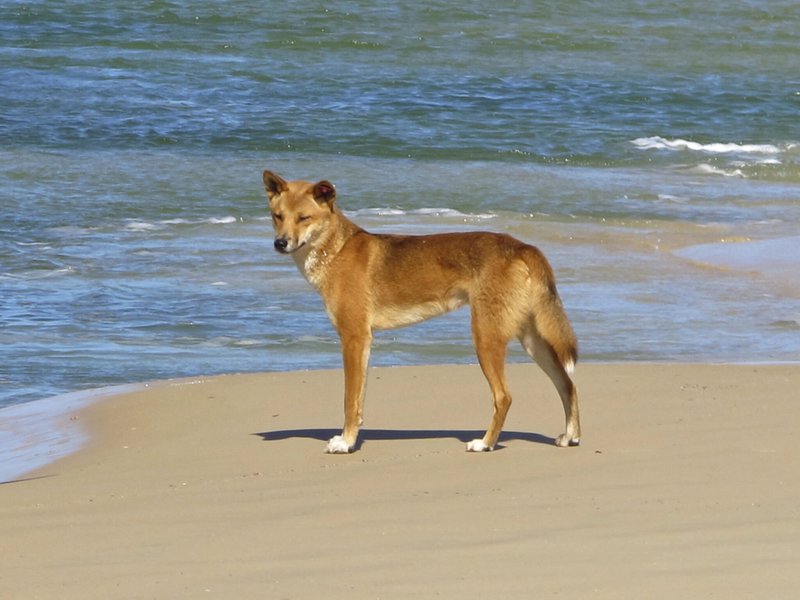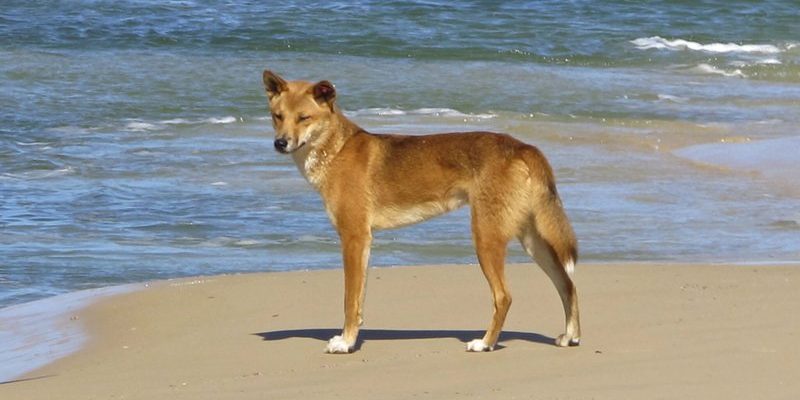
Dingoes are more than just dogs; they represent a unique blend of culture and environment. Indigenous Australians have a long history with them, often weaving them into their stories and traditions. While they may look like pets, they are part of the wild and have traits that set them apart from domesticated dogs. So, grab a cup of coffee, and let’s explore the top ten things you probably didn’t know about this remarkable creature!
1. The Origins of the Dingo
Dingoes are believed to have arrived in Australia around 4,000 years ago, making them one of the oldest land mammals in the region. Historians think they came from Asia, brought by seafaring people. Here’s the thing: dingoes are often considered the ancestors of domestic dogs, but they’ve evolved separately in the wild. This long history has given them unique physical and behavioral traits that set them apart from their domestic cousins.
These wild dogs are highly adaptable and can thrive in various environments, from arid deserts to lush forests. They are known for their incredible hunting skills, which they’ve honed over generations. In the Australian ecosystem, dingoes play an essential role as apex predators, helping to keep populations of various animals in check. It’s like having nature’s own balance team, ensuring no one species dominates the landscape.
2. A Unique Pack Structure
Dingoes typically live in packs, which can range from two to ten members. But here’s where it gets interesting: dingoes have a social structure similar to wolves. There’s usually an alpha pair, which leads the pack, while the rest of the members support the group in hunting and raising pups. This pack mentality is vital for their survival, especially when hunting larger prey like kangaroos.
Honestly, watching a dingo pack in action is fascinating. They communicate through a range of sounds, from howls to growls and even barks. It’s almost as if they have their own language! Each sound has its purpose, helping to maintain pack cohesion and coordinate during hunts. If you ever get a chance to observe them, you’ll see how teamwork plays a pivotal role in their success.
3. The Dingo’s Diet
Dingoes are carnivores, but they’re not picky eaters. Their diet mainly consists of small to medium-sized animals such as rabbits, wallabies, and even the occasional kangaroo. They’re also known to scavenge if food is scarce, which is an essential survival skill, especially in the harsh Australian landscape.
You might be wondering how they manage to catch their prey. Dingoes are incredibly smart and can work together to hunt. They might chase a kangaroo into an open area where another pack member is waiting to ambush. This strategy showcases not only their hunting skills but also their intelligence and adaptability. It’s a classic example of “working smarter, not harder.”
4. Their Role in Aboriginal Culture
Dingoes hold significant cultural importance for many Indigenous Australian groups. They are often referred to as “wild dogs” and are featured in various Dreamtime stories. One common theme is the dingo as a protector, highlighting their loyalty and intelligence. This deep connection to the land and its creatures reflects the understanding that all animals play a role in the ecosystem.
The relationship between Indigenous Australians and dingoes is a blend of respect and coexistence. They understand how dingoes contribute to the balance of nature, much like how humans must learn to respect the environment around them. It’s a beautiful reminder that we’re all interconnected within this web of life.
5. The Dingo’s Physical Characteristics
Dingoes have some distinct physical traits that set them apart from domestic dogs. For starters, they have a lean, muscular build that helps them be agile hunters. Their ears are erect, and their muzzle is often longer and narrower than that of many domestic breeds. This unique appearance is part of what makes them so captivating.
In terms of color, dingoes can vary, showing shades from sandy yellow to reddish-brown. Their thick fur helps them survive in a variety of climates, keeping them warm in colder months while protecting them from the sun when it’s hot. Think of them as nature’s perfect athletes, designed for their environment.
6. Habitat and Distribution
Dingoes are found throughout mainland Australia, but their population isn’t uniformly spread. They tend to thrive in remote areas like the Outback, where they can roam freely without much human interference. However, human development has pushed dingoes into smaller habitats, which can sometimes lead to conflicts.
You might find dingoes in national parks, coastal regions, and even in suburban areas. As adaptable as they are, they perform best in areas where they can access food and water sources. It’s a bit like finding your perfect spot to set up camp; location matters!
7. Conservation Status
Despite their resilience, dingoes face significant threats due to habitat loss, hunting, and competition with domestic dogs. Here’s the thing: while they’re often viewed as pests, they are crucial for maintaining ecological balance. In some regions, dingoes help control populations of introduced species like feral cats and rabbits, which can severely disrupt the local ecosystem.
Conservation efforts are underway to protect the dingo and their habitats. Various organizations aim to raise awareness about their importance and the need for coexistence with humans. It’s not just about saving a species; it’s about maintaining the health of the environment as a whole.
8. The Dingo’s Vocalizations
Dingoes are known for their unique vocalizations. They communicate with each other through a series of howls, growls, and barks. Each sound serves a purpose, whether it’s to call the pack together, signal a warning, or assert dominance. Their howls can be hauntingly beautiful, echoing through the night and reminding us of their wild nature.
Listening to a pack howl can create a connection to the wilderness that’s hard to replicate anywhere else. It’s a reminder that these animals are not just part of the landscape but also part of the soundscape of Australia. The next time you hear a dingo howl, take a moment to appreciate the story it tells about survival and community.
9. The Dingo’s Influence on Research
Dingoes have become a subject of interest for researchers studying animal behavior, ecology, and conservation. Scientists often look to dingoes to understand predator-prey dynamics and how apex predators impact their environment. Through studying dingoes, researchers gain insights into maintaining healthy ecosystems and the consequences of removing top predators.
By understanding the dingo’s role, researchers can develop better conservation strategies. It helps to create a more sustainable coexistence between wildlife and human populations. This research could be vital in protecting not just dingoes but many other species that share their environment.
10. Common Misconceptions About Dingoes
Lastly, there are several myths surrounding dingoes that deserve clarification. One common misconception is that they are aggressive and dangerous. While they are wild animals and should be treated with caution, dingoes generally avoid human contact. They’re more interested in hunting and surviving than in causing harm.
Another myth is that all dingoes are the same. In reality, there are variations in behavior and appearance based on their location. Some might be more social while others are solitary. It’s essential to recognize the diversity within the species instead of generalizing based on limited encounters.
In conclusion, dingoes are much more than just wild dogs—they are a vital part of Australia’s identity and ecosystem. From their unique adaptations and complex social structures to their cultural significance, there’s so much to appreciate. So the next time you think of Australia’s wildlife, remember the dingo and all the fascinating stories that come with it. They’re not just part of the landscape; they embody the wild spirit of the land.

